My mom likes to tell me that I’m a minimalist, except when it comes to one thing: books. So fittingly, my 2012 summer research project is about the physical book, specifically the intersection between digital publishing (read: e-books) and fine press editions of books. I am using fine printing presses to conduct this research because
“fine printing distinguishes itself from average printing through the quality of its materials and the integrity of its processes” (Arion Press).
Although the advent of e-books has caused some to declare outright that “Print is dead“, looking at the future of the physical book in light of fine press editions shows that these books, as works of art, have the potential to give permanence to print. Fine press editions are inherently beautiful as an object, as they are often made using handmade paper and ink, are hand-bound, and represent hundreds of hours of work by not only the author but the publisher, artist, and printers.
In order to conduct this research, not only am I reading as many books and articles about the subject as possible, I am also visiting individual fine presses in Northern California and England. I had my first press visit on Thursday, at the Arion Press in the Presidio of San Francisco. The publisher, Andrew Hoyem, has been running the press for 51 years. The Arion Press stands out from most other presses for two reasons: they have a full-time staff of 12 people, while most presses have 3-4 at the most; and they are one of the only manufacturers in the US of metal type. 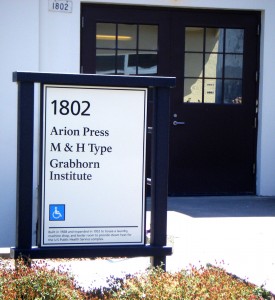
My visit to the press started with a tour by the publisher himself. He pointed out a few of the company’s more outstanding editions, and he explained the processes of a few collaborations between local artists with the press. He then took us downstairs to the combined composing room and pressroom, where the text for the projects are set by hand and then sent to the various letterpresses (there are more than 10 presses down there, another rarity). This is, in theory, what the presses look like, although this is a decorative 19th century version: 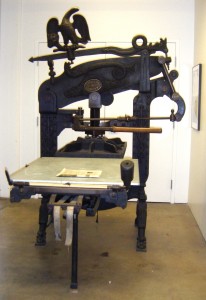
Next we went around the corner to the type foundry, M&H, where rows of loud little machines churn out metal blocks with letters on them, otherwise known as type. In recent years the press has been able to incorporate computers into the process, making the work significantly less labor-intensive. As a souvenir of the visit, each guest on the tour got to pick a piece of type, a letter or an ornament, to keep. I took a shiny letter E. This is one of the type-making machines: 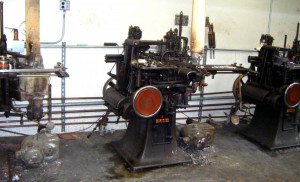
Finally, we went down the other corner to the book bindery, where two women were in the process of sewing together pages of an upcoming book and pasting the collected pages to the cloth binding. This seemed the calmest part of the overall process, as there was only one strange machine in the room, the rest being done by hand. One of the best parts of the building, in my opinion, was the corridor between the back rooms filled floor to ceiling with ‘typecases’, flat wooden drawers containing a full set of a certain type, like Times New Roman 14 pt. The building houses over 4,000 typecases. 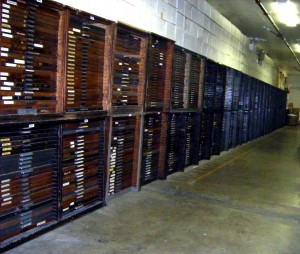
After the tour was over, I had the privilege of meeting with the publisher, Andrew Hoyem, for a short interview relating to my research. He gave me a brief history of his involvement with fine printing, and his opinion of technology in relation to his work. He also explained how the work of the Arion Press, as a historic San Francisco establishment, has significant cultural impact in a way that another smaller. more individualistic press, could not have. He has noticed, during the decades of not only making books but selling them, that recently people have expressed interest in the Arion Press as a relief from e-books, as a way to maintain their love of books. 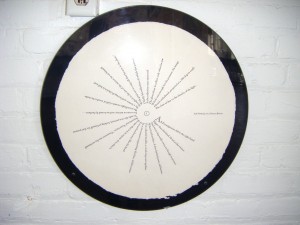
Overall, the visit was enlightening and inspiring. Tomorrow I go to the Iota Press, in Sebastopol, which will most likely be as opposite as possible from the Arion Press, as it is run by only one man with two presses. But no doubt I will learn just as much as I did from the Arion Press about the place of the book in the digital age.
